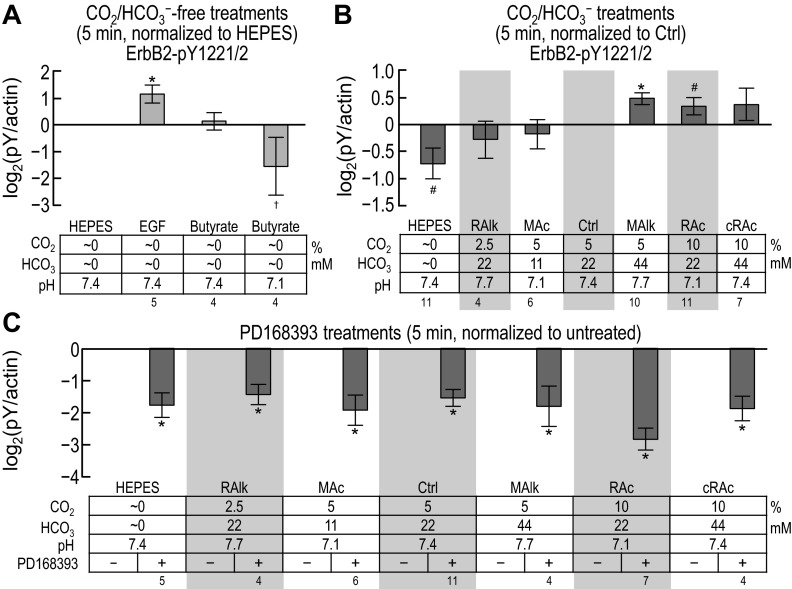Fig. 10.
Quantification of ErbB2 immunoreactivity at pY1221/pY1222 after solution treatments of 5 min. These are the results of densitometry of blots similar to those shown in Fig. 9. For each treatment, pY-specific immunoreactivity at ErbB2 pY1221/pY1222 was first normalized to actin. A: ratios of ErbB2-pY1221/pY1222 to actin [(ErbB2-pY1221/2)/actin] for nominally CO2/HCO3−-free treatments normalized to (ErbB2-pY1221/2)/actin for the nominally CO2/HCO3−-free HEPES treatment. B: ratios of pY1221/pY1222 to actin [(pY1221/2)/actin] for nominally CO2/HCO3−-free HEPES and CO2/HCO3− solutions, normalized to (pY1221/2)/actin for our Ctrl treatment (5% CO2/22 mM HCO3−). C: (ErbB2-pY1221/2)/actin for treatments like those in B but with and without the ErbB inhibitor PD-168393, normalized to (pY1221/2)/actin for the equivalent treatment without PD-168393. Sample sizes (n) are shown beneath each graph. †Bar for which all constituent data points are <0 (or >0) but not statistically different from 0. #Bar for which P < 0.05 (compared with 0 by a one-tailed, paired t-test); in the text, we state that the parameter “tends or tended” to rise/fall. *Bar that is significantly different from 0, even after the very conservative Bonferroni correction (P < 0.05 divided by the number of treatment solutions considered); in the text, we refer to the change as “significant.”

